Auschwitz II - Birkenau
What's to know about Auschwitz II or Birkenau?
- It is 3 km north of the main camp
- In march 1941 a much larger camp Auschwitz II = Birkenau was started in the town Brezeinka – the people of the town were evicted to make way for the camp
- It was the largest concertation camp in Nazi-occupied Europe – at it’s peak as many as 5000 people were killed every day - at the height of it’s existence in 1944: 90.000-100.000 prisoners were in the complex
- At least 865.000 were killed immediate upon arrival
- Gate of death: the entry Building - on top of the roof is a siren
- the single rail line entering the camp was added in spring 1944 to permit detraining of deportees directly in the camp close to Crematorium II & III. The main reason was a dramatically increase in arrivals
- The Ash Pond: tonnes of ash – the remains of hundreds of thousands of Auschwitz victims were dumped in ponds and scattered in various areas around the outskirts of the camp, or used as fertilizer in fields, as well as used as base material for road and building constructions
the gas chambers
& crematorium of Birkenau:
as our guide pointed out to us several times – the crematorium is not the
one thing which was so unusual – before and after everywhere dead people get
burned. It is the gas chambers where the victims got killed first – which is
what is the unbelievable.
- Bunker I & Bunker II: also called “Little red house” & “Little White house” were converted farm buildings and away from the main camp - used as gas chambers before the 4 large crematorium buildings were built and in use from Mar 1942 – Apr 1943, likely again used in Spring 1944 when the large transports arrived – foundations of Bunker II are still there
- In 1942 they planned larger crematoriums: the plans for number II & III with underground gas chambers and an undressing room. Each had 5 triple-muffle ovens: 15 total burning chambers and a planned combined capacity of 2880 bodies in 24 hrs. Crematorium II opened Mar 13, 1943 and Crematorium III in June 1943
- Crematorium IV & V had integrated gas chambers and were entirely above ground. They had each 4 double-muffled ovens: 8 burning chambers and a planned daily capacity of 1536 bodies in 24 hrs. Crematorium IV started to operate Mar 22, 1943 and Crematorium V on April 4, 1943
- If all 4 Crematoriums were run the capacity was 4400 in 24 hrs, which could be exceeded by loading more bodies – but this often damaged the ovens and chimneys – putting some of the buildings out of service – in summer 1944 during the murder of large shipments burning pits were again used, because the Crematoriums were over capacity
- Crematorium V was surrounded by woods and the most isolated one – this one was in use until the last day in January 1945 – it was blown up on Jan 26, 1945 the day before the liberation – since the ovens were never removed the ruins still show ironwork frames of the oven assembly
- they used Zyklon B a cyanid based insecticide from DEGESCH (Deutsche Gesellschaft fuer Schaedlingsbekaempfung). Zyklon was the company name and B stood for Blausaeure The gas chambers were quickly destroyed by the Nazis shortly before the Soviet Army liberated the camp in Jan 1945
What is the Sonderkommando?
- In 1942 the Birkenau Sonderkommando was formed – eventually there were Sonderkommandos for each Crematorium: they had to keep order while the prisoners were disrobing and passing into the gas chambers, then pull the bodies out, cut of women’s hair, search for valuables, and load the ovens, they operated the ovens and emptied the ashes – they were periodically executed
- the Sonderkommando of Crematorium IV revolted on Oct 7, 1944: an uprising was being planned by the resistance movement, but it began early when the Sonderkommando received intelligence that they were all to be killed. They attacked the SS guards with tools and stones and set the crematorium building on fire, the Sonderkommando in Crematorium II killed 2 SS man and a kapo – 2 by pushing them into ovens – a year earlier on Oct 23, 1943 a group of Jewish women led to Crematorium II revolted against SS guards, one of the women took a pistol and shot 2 SS guards
We visit Birkenau:
the famous gatehouse with the gate of death: if you
ever saw a picture from Auschwitz that is what you see – the gate to the huge
camp of Birkenau
Up in the tower:
we went inside and up on top of the tower from where we could see over the
whole camp – that is when you realize how fast this camp is– you can't believe
it... it goes on forever. When I thought about Birkenau, I always thought Auschwitz
is the camp and Birkenau the extermination. But this is actually a huge camp –
as well as it became an enormous extermination camp
the bathroom Barrack:
we visited one barrack: where you could see the bathroom facilities for 2000
people – she told us, that often the prisoners used this to learn what happens
with their families – because they hoped to hear from them
In a wooden barrack
as it was and where they lived: we went into one of the wooden barracks – where
only 2 stoves where on either end – the floor was mud. In summer it was boiling
hot and you nearly couldn’t get air, in spring and fall when there is a lot of
rain the floor was mud and in winter only the ones close to the stove had it a
little bit warm. Only a few wooden barracks are left, all other got burned down
and the only thing left are the stove and chimneys – which makes the whole area
very depressing
Along the rail tracks:
we walked through the camp to the
crematorium: it was a long walk – along the railway tracks which were made in
1944 to be more efficient when the large “shipments” came in
Crematorium: and
then you can see the rubble of the crematoriums: they got blasted and not a lot
is left – even we walked a lot (because the camp is huge) it is so close to the camp. You could see on
the ends the stairways going down into the gas chambers: and then you have to
remember that they cramped 2000 victims inside – beaten and intimated by the SS
and their dogs: we saw a model of the Crematorium II during it’s use from Mar
1943 – Nov 1944
Memorial: Near it
is a huge memorial from 1967: it shows on how the victims tried to scramble
over each other to get some air when they were killed – and as she told us,
children were always at the bottom and the strongest at the top when opening
the gas chambers.
Ash ponds: From here we walked by the as ponds where they
dumped the ashes
reception house:
here is where they arrived and had to take of their cloth: We started out in
the largest room: the undressing room – then we walked along the corridor where
the prisoners were herded along to the showers – we could see some delousing
autoclaves – then came through the room where hair cutting took place: which
was done not only with blunt instruments but also fast (so often they got
injured) – it was done by men with leering SS men – here also the tattooing and
then we walked into the “Brausen” = Showers: hundreds in them the water was usually
ice-cold or scolding hot
Pictures full of
memories: if you have to leave your house and you think you never come
back, what would you take with you – they brought valuables and money, in case
they need a new start and pictures: so in one room they had those pictures:
walls and walls of them – when you look at them and you see the smiling happy people,
it is so unbelievable that those people never had the change for a life
Kanada: We saw
into the rooms used as Kanada where they sorted the property from the
prisoners. Kanada was the nickname, as it was paradise. During 1944 when large “shipments” of Hungarian jews arrived these
barracks were insufficient to hold it all and piles appeared between the
barracks waiting for storage
Around the Camp:
since we had some spare time we walked a little bit around the camp – had more
time at the Crematoriums, barracks, the train cart und railway tracks…. But it
was wet and we were really cold… time to go back. It was so rainy and wet –
Gine had to constantly wipe off her Camera, using all Kleenex and even the T-Shirt
had to help out.
.
And where did the victims arrive if not here? –Die Judenramp
- From 1942 – May 1944 all victims arrived at the Judenrampe: the Jewish platform
- It was the original train line and enlarged as the Bahnhof West, which had then a concrete platform 500 m long complete with powerful lights for the selection process when the train arrived at night
- Around 600.000 – 900.000 arrived here
- The Unloading Ramp: was possible the most terrifying part of the camp, it was here that SS officers separated men from women & children and SS doctors declared who was fit for work
- After Arriving: they got separated in Men and women with children and then lined up for SS Doctors to inspect them to determine who went into the camp for work and who went right away into the gas chamber – first they were driven by truck to the gas chamber, once the railway went into Birkenau the selection process was inside the camp
The Rampe is not at the camp – so with the car we drove to 26
Piwniczna…. The only one there we went to stand by the rail track (which is not
the original one) and a train car… the concrete ramp is gone – but even
standing there you can imagine on how long it was. Thinking about that they had
lamp poles all along to light it up
Right across from it where a lot of old brick buildings: so we checked
them quickly out (because we were soaking wet!!) they used them as storage
houses for potatoes – and yes I never even thought about on how much food you
need to store if you have thousands of people in the camps (even if they didn’t
feed them enough).
The End of Auschwitz
- 56.000 were marched out of the camp in Jan 1945 on the death march – 5800 to sick to march were left in the camp when the Soviets liberated it Jan 27, 1945
- As the Soviets approached Gas chamber II& III got dismantled in Nov/Dec 1944 with the ovens and gassing apparatuses removed and brought to camps closer to Germany – the buildings were blown up on Jan 20, 1945
.
Keep the Memory alive
I looked at the pictures –
but did I see?
I read their stories – I wasn’t
there.
I thought about them , I
didn’t know them.
I cannot understand what
they went through, I can only try.
Did I feel for them – Yes!
Did I cry for them – Yes!
What can I do for them. Nothing? Yes I can
I CAN REMEMBER THEM
I CAN KEEP THE MEMORY ALIVE
.
And what is Auschwitz III?
- It was the largest of the associated labour camp started in 1943 – 3 km away near Monowice
- One of the primary purposes was to provide slave labour to Germany’s industry in April 1941 IG Farbenindustry chemical concern built a huge factory complex making synthetic rubber and fuel: Buna Werke
- Prisoners built the factory – at the beginning they marched daily the 6 km, but it was a waste of time, so they were transported by rail and then started as the demand for worker increased to built a camp: the camp was built in 1942 and called “Dorfrand” and later “Buna Lager” it became later Ausschwitz III Monowitz and in charge of all other 47 sub camps
- The highest in numbers was 11.000 – and mortality was high
- The Buna Werke were bombed 4 times between Aug-Dec 1944. Also the Bunawerke got dismantled after WWII and the machinery shipped to Russia. Some buildings are still original, also in the 1950s the area was rebuilt and became one of the largest East European Chemical factories.
Our drive back passed by the old area where this camp and the factory
was, we even stopped at an old ruined factory – I think it was this one – but
we were not super sure. We also saw along the road some one-man shelters: where
the guards were in and made sure everyone went the right way.
A Rainy drive home
Time to head back to
Krakau: so on the heat – of the coats… and slowly we get dry. As where we after
a few hours of cold and wet have the luxury to blow a lot of heat and get dry…
back the prisoners didn’t had that luxury.
On the drive back we
came by a huge park with rides and discovered it was a wild west Fun park.

 Auschwitz II-Birkenau, małopolskie, Poland
Auschwitz II-Birkenau, małopolskie, Poland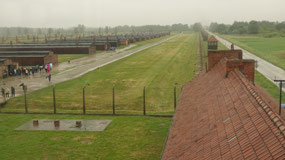
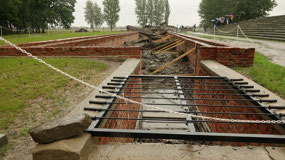
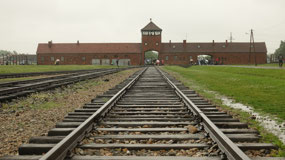
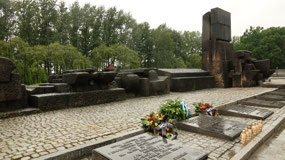
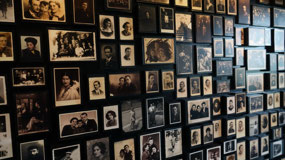
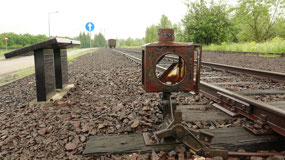
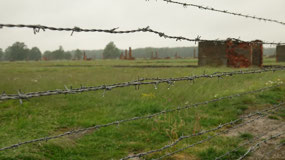
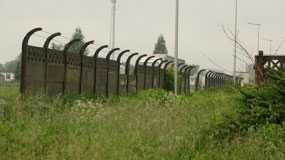




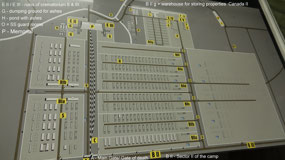
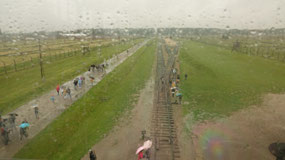
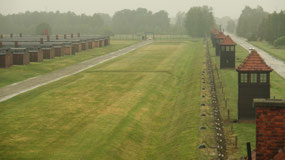
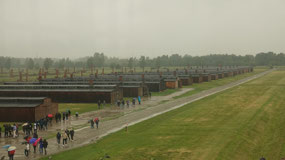

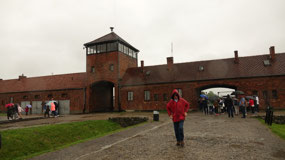
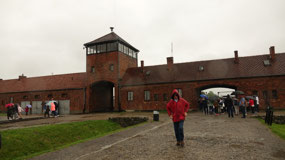

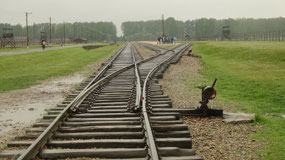
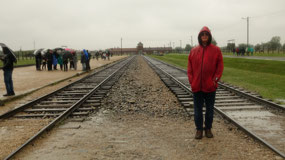
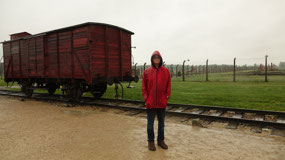
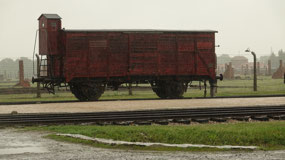
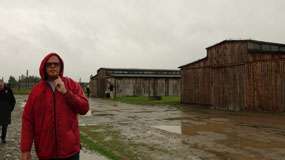
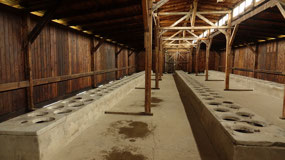
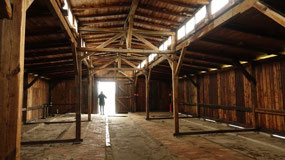
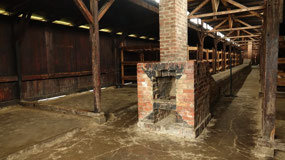
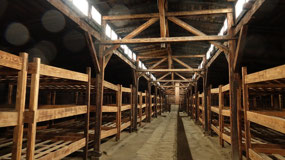
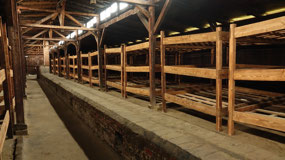
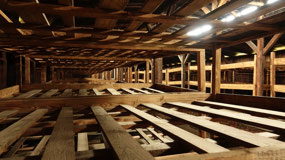
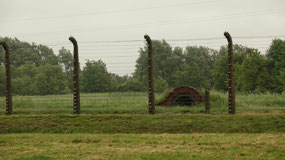
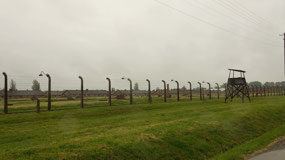
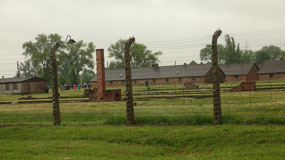
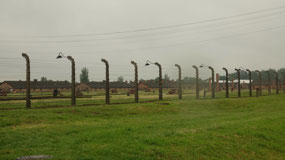
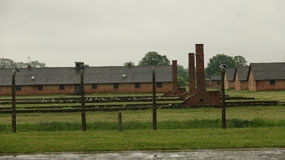
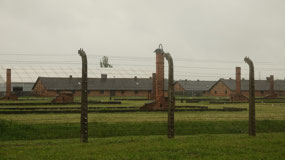
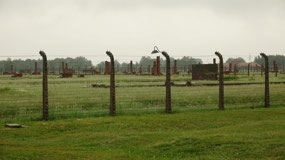
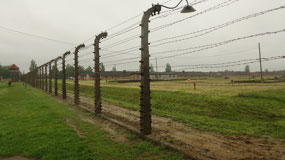
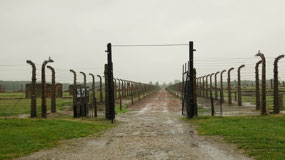
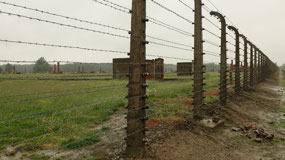
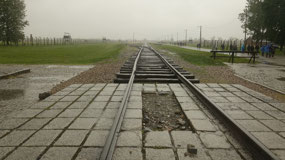
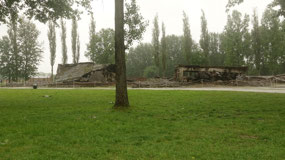
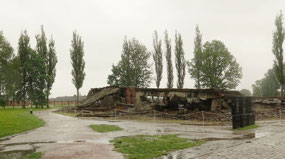
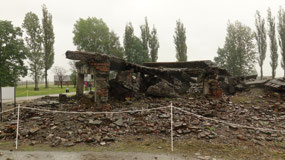
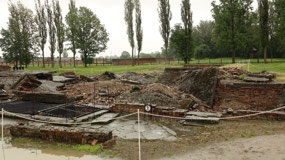

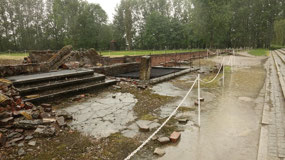
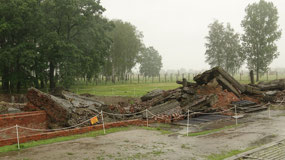
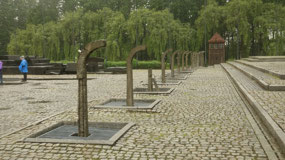

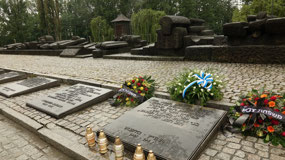
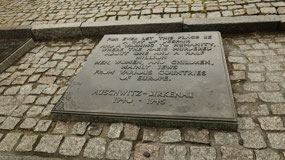
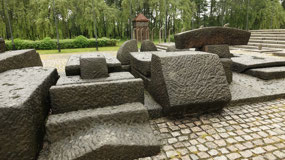


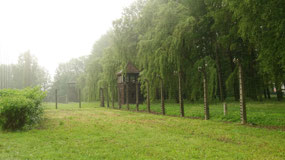
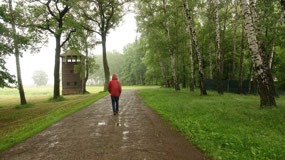
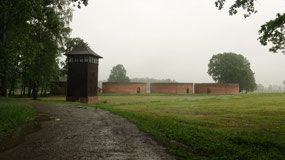
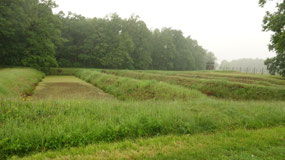
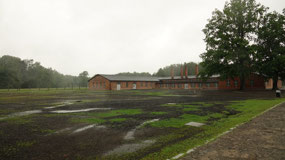
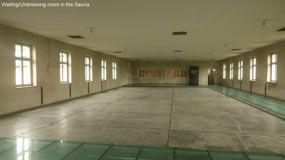
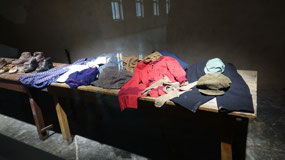
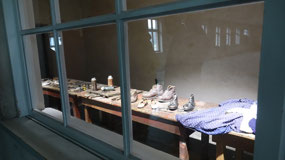

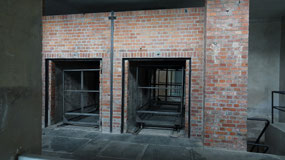

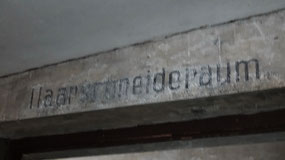
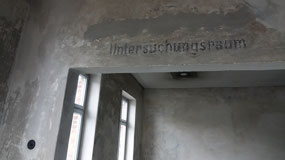
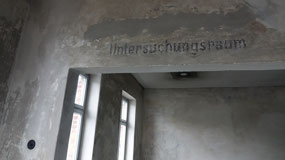
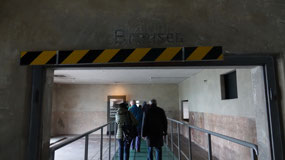
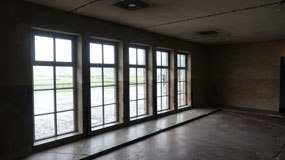
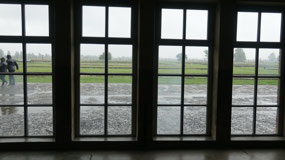
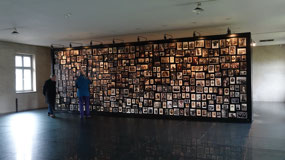
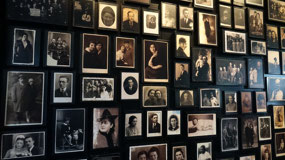
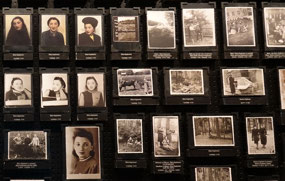
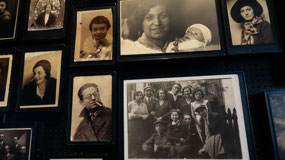
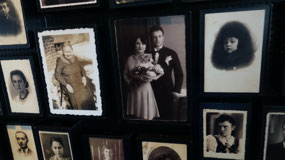
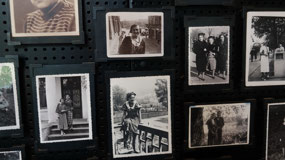
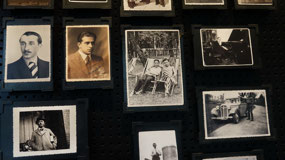
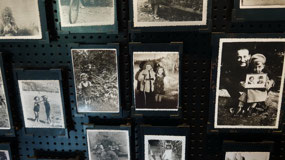
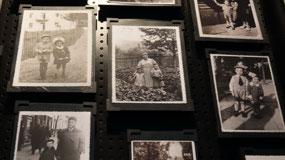
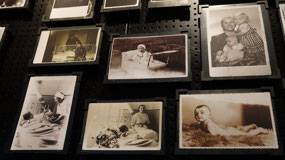
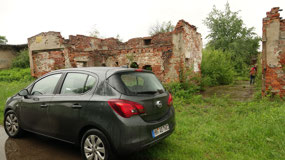
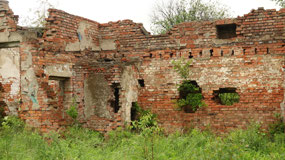
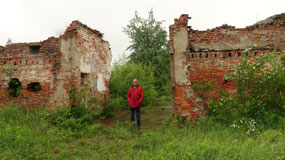
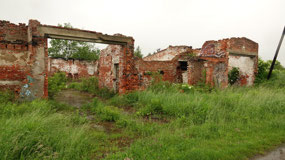
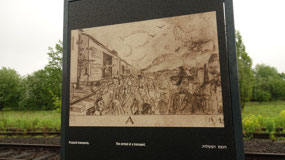
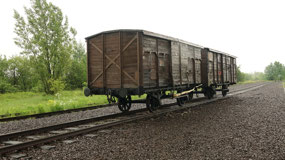
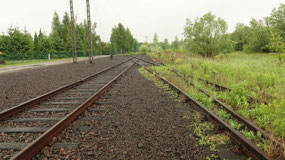
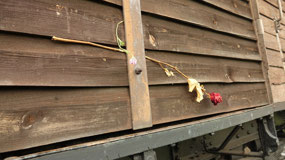
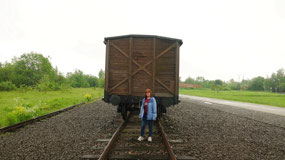
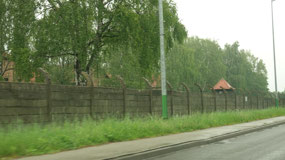
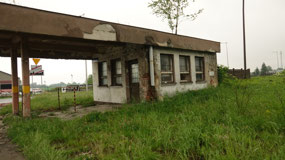
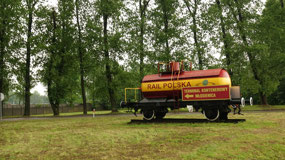
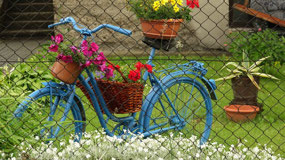
2025-05-23